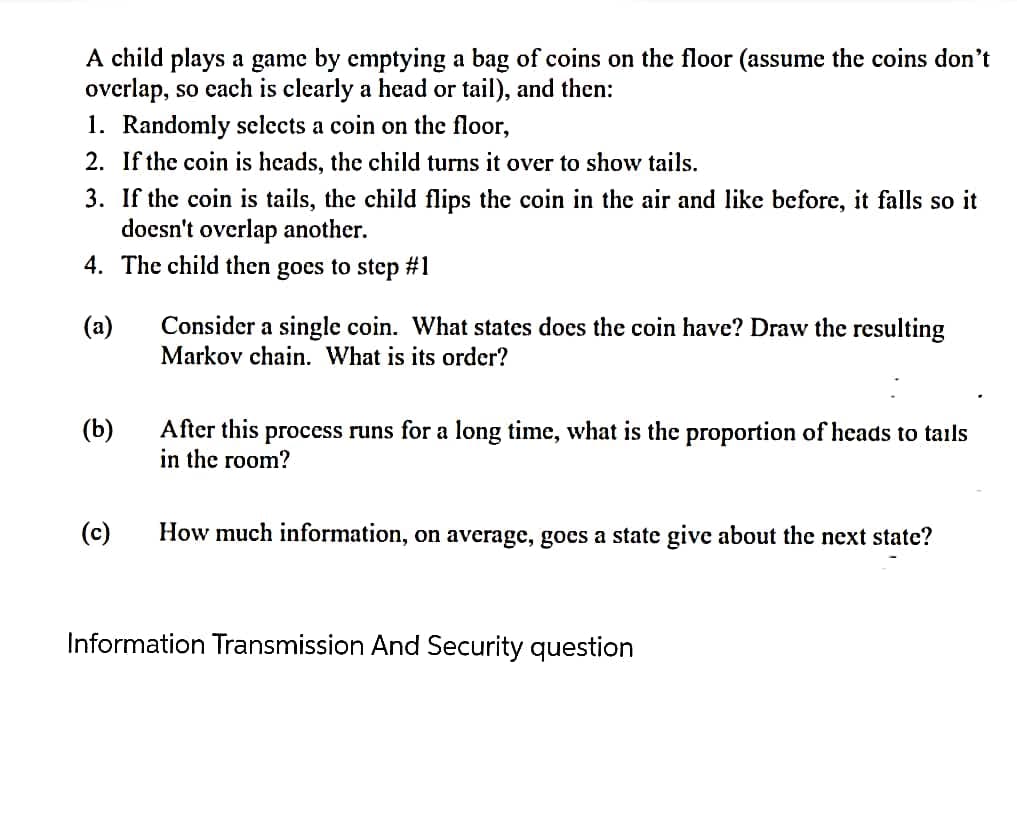A child plays a game by emptying a bag of coins on the floor (assume the coins don't overlap, so cach is clearly a head or tail), and then: 1. Randomly selects a coin on the floor, 2. If the coin is heads, the child turns it over to show tails. 3. If the coin is tails, the child flips the coin in the air and like before, it falls so it doesn't overlap another. 4. The child then goes to step #1 Consider a single coin. What states does the coin have? Draw the resulting Markov chain. What is its order? (a) (b) After this in the room? process runs for a long time, what is the proportion of heads to tails (c) How much information, on average, goes a state give about the next state? Information Transmission And Security question
A child plays a game by emptying a bag of coins on the floor (assume the coins don't overlap, so cach is clearly a head or tail), and then: 1. Randomly selects a coin on the floor, 2. If the coin is heads, the child turns it over to show tails. 3. If the coin is tails, the child flips the coin in the air and like before, it falls so it doesn't overlap another. 4. The child then goes to step #1 Consider a single coin. What states does the coin have? Draw the resulting Markov chain. What is its order? (a) (b) After this in the room? process runs for a long time, what is the proportion of heads to tails (c) How much information, on average, goes a state give about the next state? Information Transmission And Security question
Chapter8: Sequences, Series,and Probability
Section8.6: Counting Principles
Problem 74E: Lottery Powerball is a lottery game that is operated by the Multi-State Lottery Association and is...
Related questions
Question

Transcribed Image Text:A child plays a game by emptying a bag of coins on the floor (assume the coins don't
ovcrlap, so each is clearly a head or tail), and then:
1. Randomly selects a coin on the floor,
2. If the coin is heads, the child turns it over to show tails.
3. If the coin is tails, the child flips the coin in the air and like bcfore, it falls so it
doesn't overlap another.
4. The child then goes to step #1
(a)
Consider a single coin. What states does the coin have? Draw the resulting
Markov chain. What is its order?
(b)
After this process runs for a long time, what is the proportion of heads to tails
in the room?
(c)
How much information, on average, goes a state give about the next state?
Information Transmission And Security question
Expert Solution
This question has been solved!
Explore an expertly crafted, step-by-step solution for a thorough understanding of key concepts.
Step by step
Solved in 2 steps with 2 images

Recommended textbooks for you

